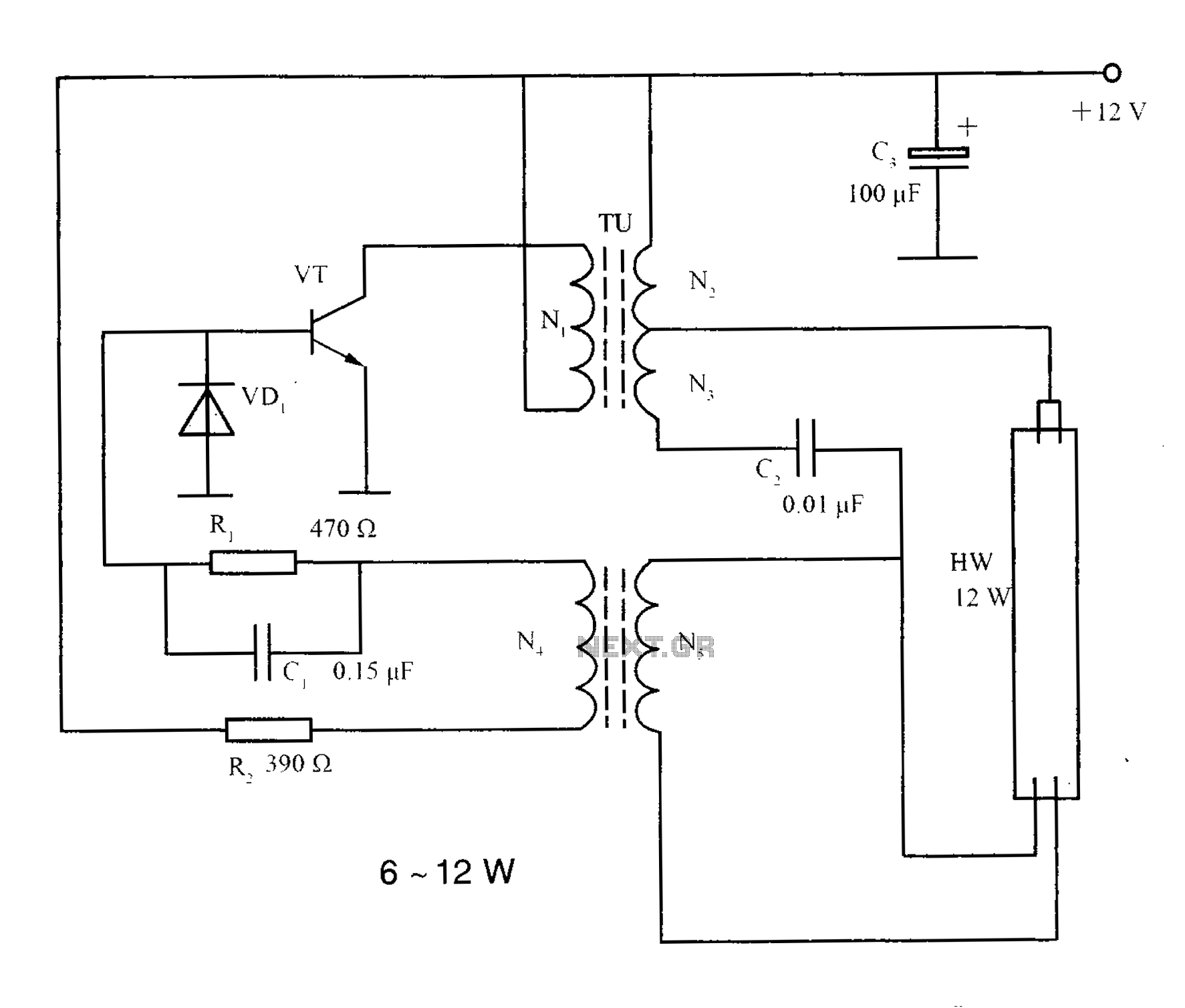
Lamp Flasher

This circuit is a series of electric lamp flashers. It is designed to flash a 12V bulb approximately once per second. The configuration allows Q2 and Q1 to provide biasing, eliminating the need for a resistor. Typically, a cold light bulb can draw up to eight times its normal operating current. Since the LM195 is current limited, high peak currents are not experienced during the turn-on phase. This feature extends the lifespan of the bulb and reduces the electrical load.
The circuit operates by utilizing a series of flash bulbs that are energized in a controlled manner. The key components include two transistors, Q1 and Q2, which are configured to provide the necessary biasing for the circuit operation. When activated, the transistors allow current to flow through the bulbs, causing them to emit light. The LM195 serves as a current limiter, ensuring that the bulbs do not experience excessive current during the turn-on phase. This is particularly important for cold bulbs, which can draw significantly higher currents when first energized.
The timing of the flashing is controlled by the circuit's design, which is intended to produce a flash approximately every second. This timing can be adjusted by modifying the values of the timing components, such as capacitors and resistors, if they are included in the circuit. The use of the LM195 not only protects the bulbs but also helps in managing power consumption, making the circuit efficient and reliable.
In summary, this electric lamp flasher circuit is designed to provide a reliable and efficient method for flashing 12V bulbs while ensuring longevity and reduced electrical strain. The careful selection of components and their configuration allows for optimal performance, making it suitable for various applications where flashing lights are required.This circuit is a series of electric lamps Flasher. This circuit is designed for flash bulb 12V approximately one-second per level. Base behind when Q2 Q1 provides biasing to eliminate the need for a resistor. Typically, a cold light bulb can be pulled eight times the normal operating current. Since the LM195 is current limited, high peak current to the bulb is not experienced during the turn-on. This extends the life of the ball as well as reduce the burden on electricity. Here is a schematic drawing: 🔗 External reference
The circuit operates by utilizing a series of flash bulbs that are energized in a controlled manner. The key components include two transistors, Q1 and Q2, which are configured to provide the necessary biasing for the circuit operation. When activated, the transistors allow current to flow through the bulbs, causing them to emit light. The LM195 serves as a current limiter, ensuring that the bulbs do not experience excessive current during the turn-on phase. This is particularly important for cold bulbs, which can draw significantly higher currents when first energized.
The timing of the flashing is controlled by the circuit's design, which is intended to produce a flash approximately every second. This timing can be adjusted by modifying the values of the timing components, such as capacitors and resistors, if they are included in the circuit. The use of the LM195 not only protects the bulbs but also helps in managing power consumption, making the circuit efficient and reliable.
In summary, this electric lamp flasher circuit is designed to provide a reliable and efficient method for flashing 12V bulbs while ensuring longevity and reduced electrical strain. The careful selection of components and their configuration allows for optimal performance, making it suitable for various applications where flashing lights are required.This circuit is a series of electric lamps Flasher. This circuit is designed for flash bulb 12V approximately one-second per level. Base behind when Q2 Q1 provides biasing to eliminate the need for a resistor. Typically, a cold light bulb can be pulled eight times the normal operating current. Since the LM195 is current limited, high peak current to the bulb is not experienced during the turn-on. This extends the life of the ball as well as reduce the burden on electricity. Here is a schematic drawing: 🔗 External reference





